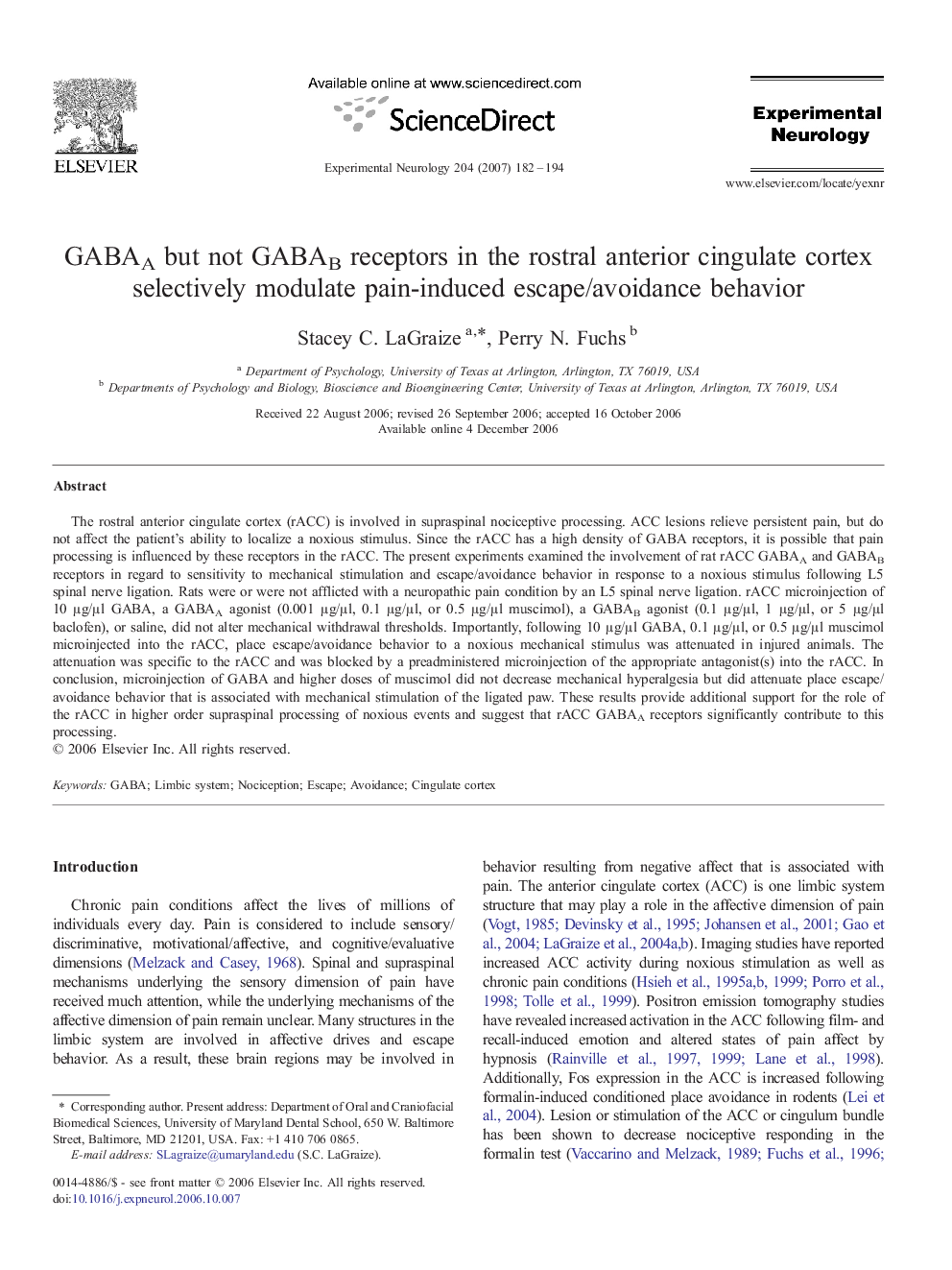| Article ID | Journal | Published Year | Pages | File Type |
|---|---|---|---|---|
| 3057172 | Experimental Neurology | 2007 | 13 Pages |
The rostral anterior cingulate cortex (rACC) is involved in supraspinal nociceptive processing. ACC lesions relieve persistent pain, but do not affect the patient's ability to localize a noxious stimulus. Since the rACC has a high density of GABA receptors, it is possible that pain processing is influenced by these receptors in the rACC. The present experiments examined the involvement of rat rACC GABAA and GABAB receptors in regard to sensitivity to mechanical stimulation and escape/avoidance behavior in response to a noxious stimulus following L5 spinal nerve ligation. Rats were or were not afflicted with a neuropathic pain condition by an L5 spinal nerve ligation. rACC microinjection of 10 μg/μl GABA, a GABAA agonist (0.001 μg/μl, 0.1 μg/μl, or 0.5 μg/μl muscimol), a GABAB agonist (0.1 μg/μl, 1 μg/μl, or 5 μg/μl baclofen), or saline, did not alter mechanical withdrawal thresholds. Importantly, following 10 μg/μl GABA, 0.1 μg/μl, or 0.5 μg/μl muscimol microinjected into the rACC, place escape/avoidance behavior to a noxious mechanical stimulus was attenuated in injured animals. The attenuation was specific to the rACC and was blocked by a preadministered microinjection of the appropriate antagonist(s) into the rACC. In conclusion, microinjection of GABA and higher doses of muscimol did not decrease mechanical hyperalgesia but did attenuate place escape/avoidance behavior that is associated with mechanical stimulation of the ligated paw. These results provide additional support for the role of the rACC in higher order supraspinal processing of noxious events and suggest that rACC GABAA receptors significantly contribute to this processing.
